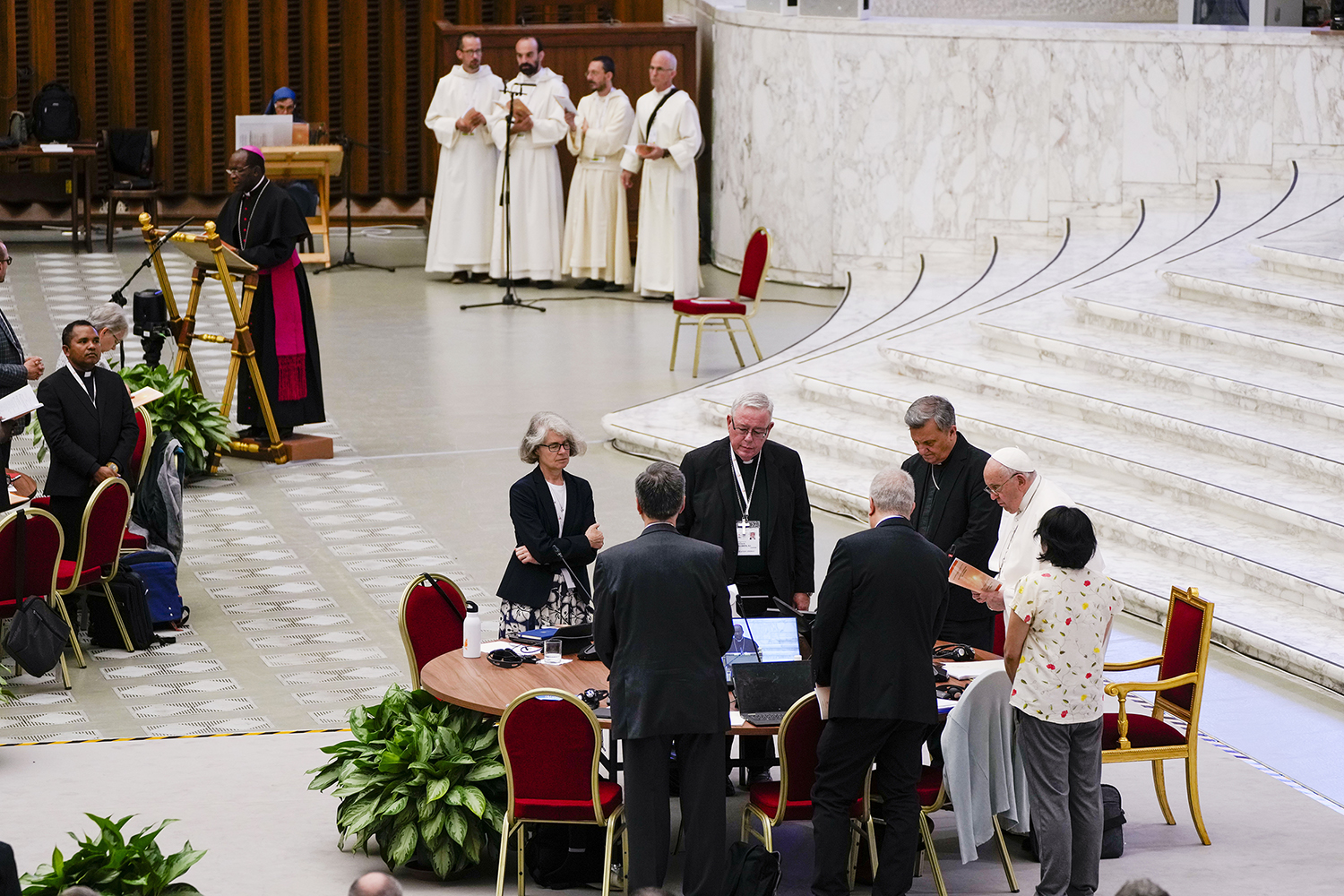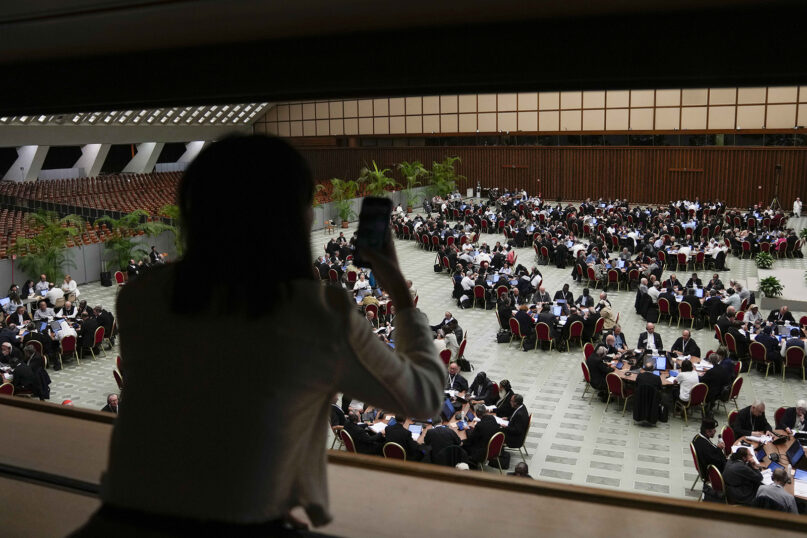(RNS) — By now, close readers of major newspapers may have seen an article about the synod of bishops meeting in Rome.
Or not.
War fills the pages of every major daily. The tales are horrific and the underlying causes confusing. How can peoples with common histories try to destroy each other?
There is some coverage of the Rome events, mostly focusing on the policy clashes outside the synod.
Inside the Vatican’s Paul VI Hall, 364 synod members, plus Pope Francis, gathered at the start of October to talk about the way the Catholic Church can move forward. For the first time, lay men and women, religious sisters, priests and deacons have a vote. The meeting is called a Synod on Synodality; the topic is how to talk about how to talk about synodality, or being synodal.
At its root, the topic is the process. Confused? So are many Catholics, especially those living in dioceses that ignore the entire project, which began in October 2021 and may come to some conclusions in October 2024. It may have conclusions, but it will not conclude. It is supposed to be an ongoing restoration of a more open church, where laity have a role.
Organized in three umbrella concepts — communion, mission and participation — the synod’s working document asks questions to guide what its leaders call “conversations in the Spirit.”
Communion (with and under the pope), mission (spreading the gospel) and participation (who can do what) often revolve around the ways people split apart. Like the Big-Endians and Little-Endians in “Gulliver’s Travels,” too often the controversy reflects what Freud called the narcissism of small differences. The more they have in common, the more they differ.
While a group meeting of 365 Catholics might seem one of unanimity, such is not the case. Some small information leaks demonstrate that at least one important issue, the place of women, may be threaded through each part of the synod discussion, but it will not be resolved soon.
So, the secular media search for other stories to tell. Catholic media lean one way or another.

From left foreground front to camera, Sister Nathalie Becquart, Synod of Bishops’ Rapporteur Cardinal Jean-Claude Hollerich and Synod of Bishops’ Secretary-General Cardinal Mario Grech attend with Pope Francis a session of the 16th general assembly of the synod of bishops in the Paul VI Hall at the Vatican, Oct. 16, 2023. (AP Photo/Domenico Stinellis)
Predictably, the anti-Pope Francis media giant, Eternal Word Television Network, and its subsidiaries give airtime to synod critics, including some who pass along false “facts” about things discussed and proposed. One program has an American host who smirks at the concept of spiritual conversation.
On the other side of the street, more liberal Catholic media focus on questions of including people in the church, be they gay, poor, Indigenous, female, migratory or divorced. Some are more interested in only one position; a few cover them all.
To feed the stories, various lobbying efforts set up in Rome join one side or the other, presenting conferences, position papers and books on their topics.
For example, in a public theater at an event called “The Synodal Babel,” American Cardinal Raymond Burke, a fierce critic of Pope Francis, read a long argument against the synod itself.
Meanwhile, at an event billed as “Spirit Unbounded,” Benedictine Sister Joan Chittister and former President of Ireland Mary McAleese called for equality in all areas of church life and practice.
And then there are books to add to the excitement.
One, by two Latin American activists and printed in eight languages by The American Society for the Defense of Tradition, Family and Property, or TFP, calls the synod a Pandora’s box. The English edition’s foreword is by Burke. The book recounts with horror that women have asked to join church governance and ministry.
A book called “Credo” by another Francis critic comes with an imprimatur from American Bishop Peter Libasci, who is currently the subject of an abuse investigation. Written by Athanasius Schneider, an auxiliary bishop in Kazakhstan, who has written against both Muslims and Jews, it aims to replace the Catechism of the Catholic Church. Unsurprisingly, it presents demonstrably false information about the history of women ordained as deacons and denies the authority of the pope to admit women to official lay ministries.
The back-and-forth is dizzying, and it will not end soon. The synod is the synod. Parts of the Catholic world are involved. Some are not. More speeches and more documents will create more controversy. More anger and more division will cause louder calls for or against one or another issue, which is the opposite of what the synod is supposed to do, which is to resolve differences and make plans to move forward in peace.
Above all the noise, Pope Francis looks outside Vatican walls to a suffering world. He calls for prayer and fasting for world peace. He asks for warring nations to stop fighting, to peacefully resolve their differences. He even phoned American President Joe Biden the other day to press the point. And that is what Francis wants for the church.





